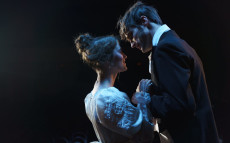- pathfindersAI
- Job Profile
Choreographers
Summary
The Art of Movement: A Career as a Choreographer
What They Do
Choreographers are the creative visionaries who bring movement and dance to life. They are tasked with crafting original dance routines and performances that captivate audiences and communicate intricate narratives through physical expression. In this role, choreographers work with dancers, directors, and producers to ensure that their artistic vision aligns seamlessly with the overall production. Whether it be for ballet companies, theater productions, television shows, music videos, or film, choreographers infuse every step with creativity, emotion, and storytelling.
Job Responsibilities
A choreographer wears many hats throughout the lifecycle of a production. Their primary responsibility is to design and create dance sequences that fit the mood, theme, and intent of the performance. This involves selecting music, developing dance moves, and rehearsing intensively with dancers to perfect each routine. Additionally, choreographers provide constructive feedback, coach dancers to improve their technique, and ensure that the performance is safe and coherent. Beyond the studio, choreographers collaborate with costume designers, lighting technicians, and stage managers to enhance the visual and emotional impact of their work. Administrative duties might also include auditioning dancers, scheduling rehearsals, and securing funding for projects.
Essential Skills
Success as a choreographer demands a blend of artistic talent, technical proficiency, and interpersonal skills. Creativity is paramount, as choreographers must constantly innovate and adapt to various styles and genres of dance. A solid foundation in dance techniques and the ability to demonstrate moves clearly help in effectively communicating ideas to dancers. Excellent interpersonal skills are essential for fostering collaborative environments, providing clear direction, and motivating performers. Additionally, choreographers should possess strong organizational skills to manage multiple aspects of production and adhere to tight schedules. An understanding of music theory and rhythm further aids in the intricate relationship between dance steps and musical accompaniment.
Educational Pathways
The journey to becoming a choreographer typically begins with a strong background in dance. Many aspiring choreographers start their training at a young age, honing their skills in various dance styles such as ballet, modern, jazz, and hip-hop. Formal education often includes earning a bachelor’s degree in dance or performing arts, where students learn about choreography, dance history, and performance techniques. Some institutions also offer specialized degrees in choreography. Additionally, many choreographers benefit from professional experience gained through internships, workshops, and working as dancers in the industry. Advanced courses and continuous learning through attending masterclasses and studying diverse dance forms enrich their expertise and versatility.
Career Prospects
The career prospects for choreographers are diversified and dynamic. While the competition can be fierce, especially for high-profile projects, numerous opportunities exist within dance companies, theater productions, and television and film industries. There is also potential to work as freelance choreographers, offering their creative services for events, corporate functions, and community programs. With experience and a solid reputation, some choreographers advance to roles such as artistic directors or producers, where they can influence broader aspects of production. Furthermore, the increasing popularity of dance in mainstream media has opened additional avenues in digital content creation and online teaching platforms.
Conclusion
In conclusion, a career as a choreographer is one of passion, creativity, and dedication. It is an artistic path that demands a unique combination of skills and experiences to transform ideas into compelling performances. With the right training and an unwavering commitment to their craft, choreographers can leave a lasting impact on the world of dance and beyond. For those drawn to the rhythm and flow of movement, this career offers not just a livelihood but a profound way to connect with audiences and celebrate the universal language of dance.
Video
Compensation
| State | Median Salary | Median Hourly | Positions |
|---|---|---|---|
| CA | 74,030 | 35.59 | 1,240 |
| FL | 49,250 | 23.68 | 90 |
| IN | 52,390 | 25.19 | 40 |
| LA | 38,240 | 18.39 | 360 |
| ME | 43,380 | 20.86 | 50 |
| MD | 55,200 | 26.54 | 70 |
| MI | 46,570 | 22.39 | 40 |
| MN | 59,350 | 28.54 | 40 |
| NE | 28,970 | 13.93 | 110 |
| NY | 104,670 | 50.32 | 280 |
| NC | 74,970 | 36.04 | 50 |
| OH | 37,300 | 17.93 | 70 |
| PA | * | * | 60 |
| SC | 47,090 | 22.64 | 120 |
| SD | 36,160 | 17.38 | 250 |
| TN | 61,110 | 29.38 | 60 |
| TX | 41,380 | 19.90 | 690 |
| UT | 41,340 | 19.87 | 150 |
| VA | 49,130 | 23.62 | 70 |
Similar Occupations
In this area you will find other occupations that are close to the one you were viewing in tasks, knowledge and work environment. If the primary job profile you are viewing isn't quite to your liking, take a look around and see what else is available.
Basic and Premium Accounts have more alternative occupations available than the Free account.

Actors - 27-2011.00
Actors bring characters to life by portraying them in film, television, theater, or other performances, using their voice, body language, and emotions. They collaborate with directors and fellow cast members to convey a story and engage audiences.
-
$*/yr
Median Pay -
62,560
Number of Jobs

Art Directors - 27-1011.00
An Art Director is responsible for leading and coordinating the visual aspects of a project, ensuring that all elements align with the overall creative vision. They work closely with designers, photographers, and other creative professionals to develop cohesive and compelling visual content for advertisements, films, publications, and various media.
-
$106,500/yr
Median Pay -
51,200
Number of Jobs